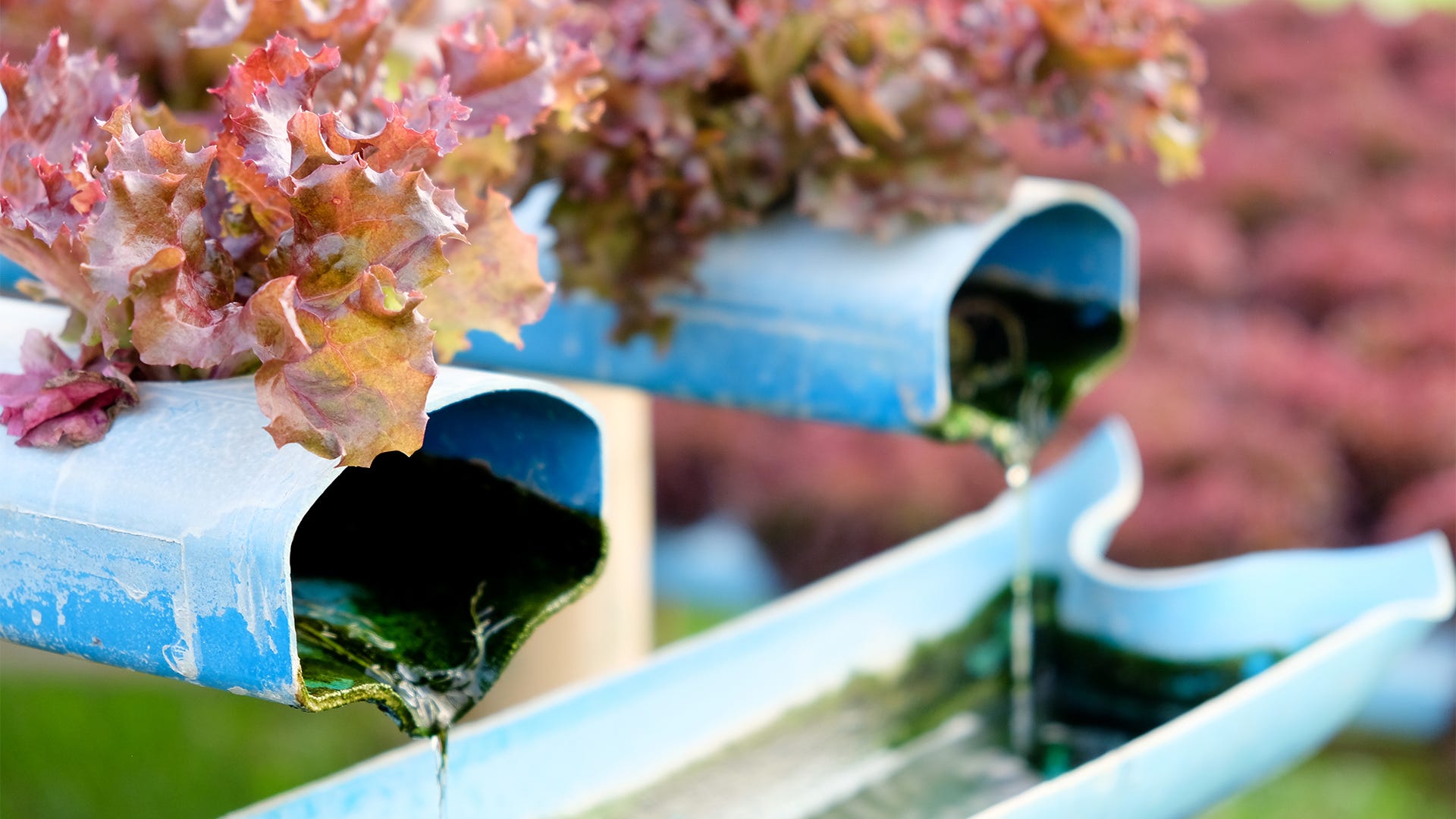
Hydroponics describes the growing of plants without soil. Instead, the plants grow in an inert medium, receiving all their nutrients through specially treated water. While many people associate hydroponics with recent advances in gardening, water-based planting has a long history. The Floating Gardens of China and the Hanging Gardens of Babylon used hydroponic techniques thousands of years ago.
How Hydroponics Works
The concept behind hydroponics is quite simple. The plants grow in a soilless medium, such as Rockwool, shale or hydrocorn. Hydrocorn is a light medium based on clay, while Rockwool is a mix of volcanic rock and limestone capable of absorbing 10 times more water than soil. Other mediums include perlite, coconut coir, vermiculite and sterile sand. Whatever medium is chosen, make sure it does not have a high salt content – that is damaging to plants.
All nutrients and fertilizer required for plant growth are mixed into water, which passes through the medium several times a day. An active hydroponic system uses a pump to move water, while passive systems rely on wick or the medium’s ability to absorb water.
Advantages of Hydroponics
Hydroponic advocates note plants grown in soilless environments grow up to 50 percent faster than plants exposed to the same nutrients in the soil. Crop yields appear to be greater than with traditional gardening. The plants expend less energy finding food, as the nutrients are delivered directly through to the roots with water.
Because of the constant reuse of water and nutrients, a hydroponic garden uses less water than traditional plant beds. Plants produced hydroponically also reduce rates of soil erosion, and they have fewer problems with diseases and bugs.
Why isn’t Everyone Growing Hydroponically?
A hydroponic garden requires an initial investment in materials. While it’s possible to build your own hydroponic system from scratch, most beginners do better if they purchase supplies.
If you’re devoted to organic gardening, it’s possible to develop an organic hydroponic system, but the system requires careful maintenance. Most nutrient compounds used in hydroponics are powder or liquid-based and designed to dissolve completely in the water. Left unattended, organic compounds have a tendency to clump up within the system. To ensure the nutrients are truly organic you can make your own organic compost tea, or be sure to research the product labels if you choose to purchase your nutrients. You can also do a quick search online to see if there are any indoor gardening stores in your area. The store reps are usually very helpful and experienced in hydroponic growing themselves, so they’ll be sure to help you find the best solutions.
Hydroponically grown plants are susceptible to overwatering, for obvious reasons. High moisture levels can cause widespread wilting and water damage.
The greatest setback to hydroponics, however, is maintenance. Unlike more forgiving traditional gardens, where problems take time to develop, hydroponic plants are highly dependent on a properly functioning system. If the system shuts down for any reason, hydroponically grown plants experience rapid die-off.
Still, the ability to grow plants without soil has intriguing possibilities. NASA, for instance, has invested considerable time and research into hydroponics as a possible source of food for astronauts on long-term space missions. While unlikely to replace backyard vegetable gardens any time soon, hydroponics does offer a solution for gardeners in harsh environments or for circumstances in which they cannot access garden lots.



